I don’t know about you, but I can guess that Mosaic Fatigue is setting in to a lot of quarters. Some pilots have done an extraordinary job of digging into this 318-page document to distill essential parts that need to be addressed. Many pilots get exhausted just looking at the NPRM. …Me, too.

Mosaic has given us an inside look at how FAA works. Many improvements resulted when industry worked in harmony with government officials. Nonetheless, careful study found areas of concern in the NPRM. Recent articles in other publications hit essentially the same points as I did in my talk (slide). Those points were partly my thinking, but I also relied on other experts to whom I had posed a variety of questions.
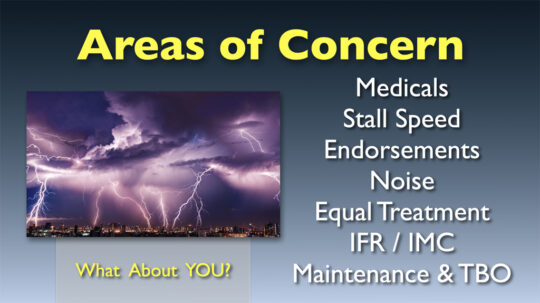
What follows represents my distillation of a number of questions that were asked in a lengthy Q&A session following the two presentations. Several conversations developed between people in the audience, and therefore asking you to listen to all of that would not be engaging. I attempted to faithfully reproduce those questions below.
Your Questions❓
or Comments❗️
Aircraft Descriptions
❓ If my LSA has been restricted to 1,320 pounds to meet current regulation, will a pathway exist to use a higher weight if the aircraft has been appropriately tested? The answer depends. If your aircraft is Experimental Amateur Built, you are the manufacturer and can change what you want. So if you want to fly on drivers license medical at a higher weight — so long as you clean stall at 54 knots or less — you can do so. On a Special LSA, the manufacturer will have to redeclare that they meet all applicable ASTM standards at the higher weight and could then start supplying aircraft with higher gross weights. However, that does not mean they will go backwards compatible and make all earlier aircraft so capable. A manufacturer would have no idea how the aircraft had been maintained or operated and they may not want to take on the added risk.
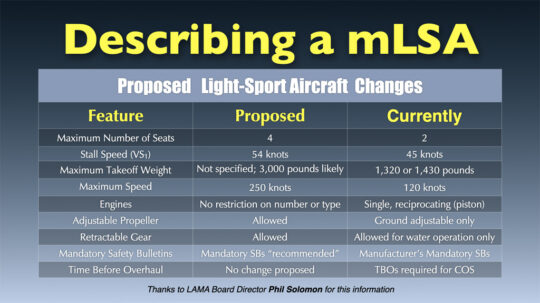
I asked several experts to help me as I studied Mosaic. One was LAMA Board Member, Phil Solomon from whose info I made this slide.
❗️ Some producers may not make aircraft specific to the U.S. market. — I agree but many CAAs, especially in smaller countries, mirror FAA regulations closely. Since the U.S. aviation market remains the largest in the world, many producers cannot ignore American rules.
❓ Will FAA allow a Sport Pilot, perhaps by endorsement, to carry more than one passenger? — This represents a good place to urge your comment. If you believe a Sport Pilot, with added training and an endorsement, should be allowed to fly on a drivers license, say so.
❓ What weight limit is applied to Mosaic LSA? — No weight limit is specified. Instead aircraft size is well governed by specifying clean stall at 54 knots. That is VS1 not VS0, clean, not flaps out. The purpose is to limit aircraft size and does not relate to slow flight or landing speeds.
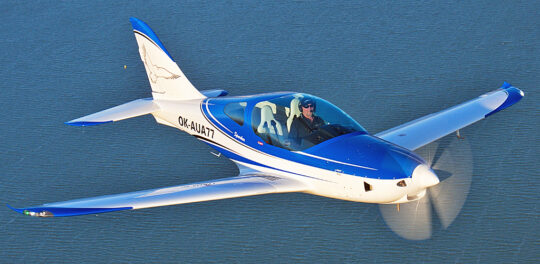
TL Sport Aircraft‘s Sparker seen in “clean” form where stall cannot exceed 54 knots in FAA’s proposal. What do you think?
❓ Why the 54 knot clean stall? Why not with flaps? — Understand that FAA’s point about 54 knot clean stall is to provide a means of limiting the aircraft size. It works well for that but this and can be easily defended by the pilot (show FAA the POH) and verified by FAA (by examining the POH). It’s a simple solution.
❓ I fly a Beech Sundowner, a 172-like aircraft. The POH states a 62 knot clean stall. If I add vortex generators to it and lower the stall speed to 54 knots, will it qualify even though the POH will still say 62? — Since Sundowner is a Part 23 certified aircraft, it would require an STC to add anything to the airframe. At that time, a modification could be added to the POH but FAA officials in various places will not initially know how to handle this. The problem is how do you know it stalls at 54 or less, how do you defend it? The cost to demonstrate convincing evidence that stall is now lower than the POH states may be excessive.
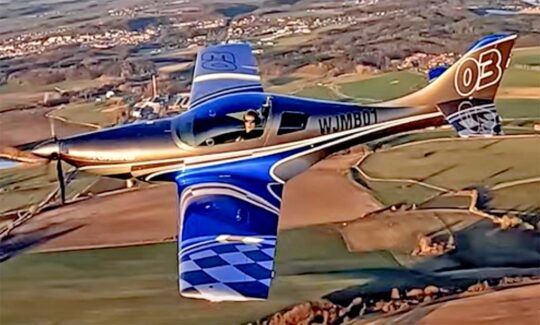
JMB strives for speed. They are already flying this turbine-powered VL3.
❗️ You referred in one slide to “high performance.” That term and “complex” are already defined in Part 61. If it has an adjustable prop, a 200 horsepower engine, and flaps, it is “high performance.” If it is retractable, it is “complex”, although it may not also be “high performance” (ex: a C-172 RG is complex but not high performance). — FAA perceived a gap between LSA and Part 23 certified aircraft; they evidently see pilot certification similarly in discussing endorsements. While Mosaic LSA gain many capabilities, Sport Pilots remain bound by other rules. It was not clarified how a Sport Pilot qualifies for “high performance” operations. We hope endorsements will suffice; they’ve worked well for 19 years of SP/LSA.
❓ Will aircraft from other countries that have met other certification systems be accepted under Mosaic? — The commenter refers to a government arrangement called “reciprocity” where one country accepts the methods of other countries. It comes as part of the Bilateral Safety Agreement. While FAA will accept such approvals, they are still likely to assure an aircraft still meets every line item in ASTM standards for Mosaic LSA.
Sport Pilot Privileges
❓ If I already have retractable experience or night experience, can I use that as a Sport Pilot under Mosaic? — You will have to get an endorsement, it appears, but any instructor who sees a lot of related recent experience in a logbook and flies with you for verification may be willing to endorse your logbook accordingly in short order. If you are not current with those skills, that person may recommend added training.
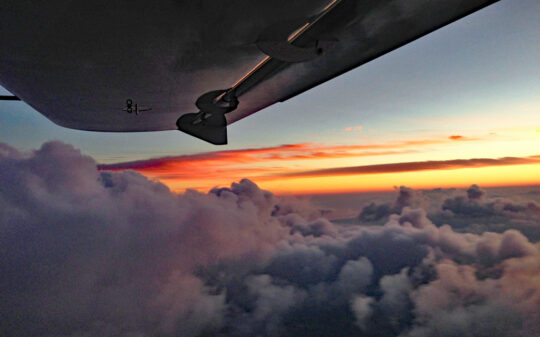
For many pilots, a primary interest in night flight is to complete a flight with a landing slightly after dark.
❓ Is the reason for the medical requirement to fly at night related to color blindness? — FAA did bring that up at Oshkosh 2023 saying that when the states give you a drivers license, they don’t adequately test for this. Personally, I find the argument weak to require pilots to pursue a medical over the relatively remote possibility that they might one day need a red/green light from the control tower.
❓ Couldn’t I just go to a doctor and only have my vision checked for color blindness? — That would make a worthy comment and would appear to address FAA’s stated concern.
❓ Will the opportunity to fly IFR be available to Sport Pilots without a medical? — Given FAA’s attachment to medicals, that seems unlikely. However, the same response about the weak relationship between medical possession and aviation safety remains.
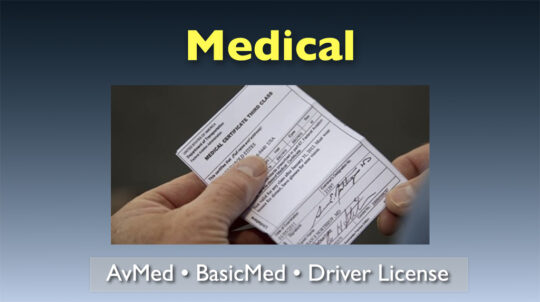
FAA continues to hold tight to their belief that possession of a medical makes flying safer, despite little evidence to support that assertion. Using a driver license in lieu of an aviation medical for Sport Pilots has proven very workable.
❓ As pilots age, insurance companies want more frequent medical visits (even if FAA may not). Will the insurance companies accept drivers license medical on Mosaic LSA? — That’s a worthy question but not one about Mosaic. Insurance companies are private and can require any evidence of medical fitness their contracts specify. They have accepted LSA use on drivers license medical and as I keep saying, no one has presented compelling evidence that possession of an aviation medical assures the flight is safer. What insurance companies do in the future is more a matter of the reinsurance market than FAA regulation. At present, any pilot over 75 years of age will find challenges getting insurance, regardless of that person’s health.
❓ Have any parts of Sport Pilot Flight Instructor been changed? — That is not an area on which I am as well informed but, yes, I saw several references to SPIs. I urge you to use the USUA/LAMA Study Guide and use its Search capability to look up that part more fully yourself. Then, please comment
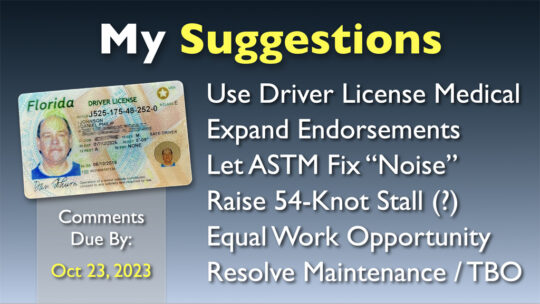
These are among the topics on which I will personally be commenting. I remain unsure if exceeding 54 knots is necessary.
❓ Are you still saying that, assuming no change in the 90-day comment window, this will not go live until the end of 2024 or early 2025? — Yes, although an extension may be granted to a group of maintenance companies in which case the rule will be pushed back at least an additional 90 days.
❓ If multi-engine is being allowed, how do you qualify for that? — This is another of those clues that this NPRM seems a bit rushed to market. FAA Aircraft Certification will permit multiple engines/motors, but the Flight Standards group did not address pilot qualifications. A conventionally-acquired multi-engine rating is far less applicable today because designs includes multiple electric motors, advanced computer controls, and many other technical capabilities FAA never confronted.
❓ What do you mean by “equal work” for powered parachutes or weight shift? — This refers to NPRM language that effectively discriminates against those aircraft types. They cannot take advantage of the opportunity to use LSA for aerial work because a Commercial Pilot certificate is required and none is available for those aircraft types. They should have equal opportunity to perform aerial work; they may be perfectly suited to some tasks.
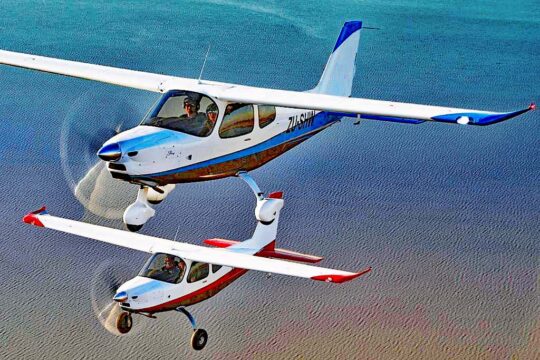
Sling High Wing from The Airplane Factory is a roomy four seater in tricycle or taildragger form. It is already in production.
❓ How fixed is FAA on one passenger only? Could the agency be convinced otherwise? — First, the restriction is on the pilot not the aircraft. A Private Pilot with a medical could use a four-seat mLSA with four people on board, assuming weight and balance allows. Regarding FAA’s flexibility on this, given their tight cling to medicals even though the evidence for them is weak, I suspect convincing them to let Sport Pilots fly three passengers is a long shot… but you can certainly comment if you have reasons to believe they are wrong.
❓ What was the YouTube address for the Mosaic Masterclass videos? — Go to YouTube and search “@EasyFlight.” Here’s a direct link. Some may find it easier to consume Mosaic through a series of videos.
Maintenance
❓ Could you take two seats out of a six-seat legacy GA airplane, so it only has four, assuming it has a clean stall of 54 knots or less? — This is a “What if”-type question that can go on too long but essentially if the aircraft has four seats and a clean stall of 54 knots, it can qualify to be flown by a pilot using Sport Pilot privileges although only with two persons on board. In order to modify a Part 23-certified aircraft, however, you’d have to get a STC and your local FSDO or MIDO will not be up to speed on Mosaic initially, so they may not understand the request.
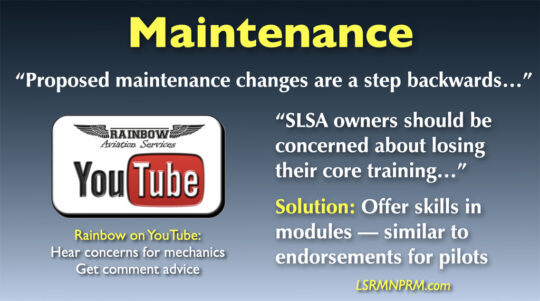
Rainbow Aviation Services is a premiere provider of mechanic training. They found several problems with Mosaic. See links below.
❓ Can a second owner of a LSA take a course to do maintenance on that aircraft? — This can happen today but some questions have been raised under Mosaic. Rainbow Aviation expressed reason for concern on this. They are more expert on maintenance and I deferred to their knowledge. Go here to see their Mosaic videos.
❗️ It appears it will be more restrictive, will take more effort to get LSRM credentials. Any such action will reduce mechanics, already in short supply. Existing A&Ps don’t have enough experience or training on Rotax or Jabiru. — You appear to understand correctly. This is an area where I defer to those with greater knowledge so I have been recommending the Rainbow Aviation YouTube channel as they have been outspoken on this.
Are We About
Done with Mosaic?
Yes! Of course, I will continue to report Mosaic developments and news but now it is time for me to formulate my own comments to FAA. I hope you found all the Mosaic information useful. I hope you will comment.
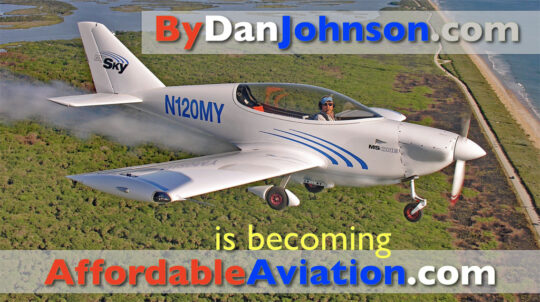
In the next month or so, ByDanJohnson.com will become AfordableAviation.com. Other than a name change it will still look and read exactly the same.
However, now I will enthusiastically return to airplane reporting. You like it and I like it. Let’s go fly!
ARTICLE LINKS:
- My video presentation from Midwest LSA Expo, 47 minutes described by viewers as a “comprehensive review of Mosaic”
- All prior Mosaic articles on this website
- Rainbow Aviation Services YouTube channel, information on their views about Mosaic on LSA maintenance
- Rainbow Aviation’s information website, if you prefer to read rather than watch a video
- USUA/LAMA MOSAIC NPRM Study Guide, download a PDF document with bookmarks and helpful organization
- Article on using the Study Guide
- Roy Beisswenger’s Mosaic Masterclass series of videos (watch instead of read), on YouTube
- Make a comment, direct link to FAA’s comment page — only 27 days left to comment
- Read what other commenters have said, FAA comment page (512 comments have been made at posting)
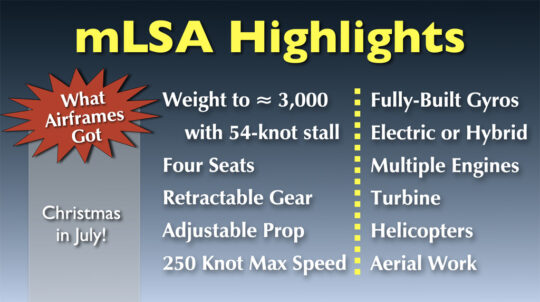
While many questions arose about what a Sport Pilot can do, the airplane side of Mosaic justifies this “Christmas in July” slide.


Through your hard work and vast research we have a gold mine of valuable information.
Following my Cessna 150M’s progress towards a light sport certification.
(Overly confident?)
Thank you
Continued One Passenger Limitation Even in a Four Seat Aircraft……..
I am tremendously passionate about this particular issue. Unfortunately, what I’m hearing from a very reliable source is that FAA isn’t likely to change their position. But I strongly feel we should each still give it the old college try. If you have any interest as a sport pilot of being able to fly with three passengers in a four seat aircraft, then please, please take the time to submit a comment. I believe the effectiveness of a comment is elevated tremendously when well-reasoned thought is included. And yes, there are numerous arguments to be made. Using the FAA’s “safety continuum”, are items such as an increased Vs1 speed, maximum speed, multiple engines, adjustable propeller, and retractable landing gear really safer than flying 3 Pax in a plane designed by the manufacturer with four seats? Shouldn’t sport recreation include the ability of a family of four to fly out for a $100 (pre-inflation) hamburger on a weekend? Even if we don’t prevail this time, it could help with a future iteration of improvements to sport piloting. If you have not commented yet, please take the time to do so. Thank you in advance.
Thanks for all that you do Dan! Do you know why the FAA extend the comment period? After such a long wait for the NPRM to be published, this is very disappointing!
Eight maintenance organizations collaborated on a petition for extension of the comment. This is a standard procedure and it is nearly always accepted, so it was. Yes, it will delay the implementation of Mosaic by another 90 days, so we are now talking about second quarter 2025.
I have truly appreciated your coverage on MOSAIC NPRM. I think the rule is very good.
I noticed the FAA just expanded the comment period to January 22, 2024 (see document https://www.regulations.gov/document/FAA-2023-1377-0599).
I am concerned because the latest comments include the negative ones. For example, there seems to be some people that are against the rule (and against GA in general) because planes make noise (not kidding) so they are against any rule that makes GA cheaper. There are many of them and it seems to be a coordinated campaign of a few hundred people to flood the comments.
Others are against GA because airplane fuel has lead and lead is bad (I think there is some more merit to this but highly overdone).
I am writing so that the GA community is aware of this and makes an effort to support the rule and comment on its positives strongly.
Will the FAA be considering removing the Special Issuance requirement for medicals? Currently a denied medical means your only option is a glider certificate until you receive a one-time Special Issuance before being allowed to fly under Sport Pilot provided the Special Issuance isn’t revoked. IMO, a driver license medical should be a drivers license medical… I saw a handful of comments related to this. I also commented, but wasn’t sure if there was any chance of the Special Issuance requirement being dropped.
Of course, I cannot comment on what FAA may have been considering, but given their very close interest in medicals for all pilots, I think them dropping Special Issuance requirements to be a remote likelihood. Certainly, it’s good you commented, and I hope others do as well, but I don’t see FAA loosening their grip too much. That’s only my opinion and is nothing official.
Dan, first and foremost, I want to express my gratitude for your dedication and effort in keeping us informed. I really appreciate it.
Thanks to your video about MOSAIC, I submitted my comment a few weeks ago. My comment was about the allowance of only one passenger. It’s challenging to support any criteria that restrict carrying just one passenger. The encouraging news is that I recently logged into Regulations.gov, and to my surprise, 106 out of 559 comments are in favor of allowing more than one passenger (it represents around 18% of all comments). I hope the FAA will reconsider allowing a Sport Pilot to fly with more than one passenger.
Once again, thank you for your valuable contributions to the General Aviation community, Dan.
You are very kind with your words, Roberto, and I am pleased you found my work of value.
I am equally pleased to see your investigation into this common inquiry. Bravo!
10,000,000 likes
Regarding the clean stall speed, it is not as easy to determine as it first appears. The proposed rule is calibrated air speed, whereas most (all?) POH refer to indicated air speed. (Or they don’t clarify it, but they are referring to indicated anyway.) At high angles of attack, there can be a huge difference between calibrated and indicated speeds, and we don’t usually care. The ASI is indicated, so that’s what we use.
I’m not suggesting that MOSAIC should use indicated air speed (it shouldn’t), but merely pointing out that calibrated airspeed is hard to come by at stall speeds.
Regarding the LSA weight limit question:
” If my LSA has been restricted to 1,320 pounds to meet current regulation, will a pathway exist to use a higher weight if the aircraft has been appropriately tested? The answer depends. If your aircraft is Experimental Amateur Built, you are the manufacturer and can change what you want. So if you want to fly on drivers license medical at a higher weight — so long as you clean stall at 54 knots or less — you can do so. On a Special LSA, the manufacturer will have to redeclare that they meet all applicable ASTM standards at the higher weight and could then start supplying aircraft with higher gross weights. However, that does not mean they will go backwards compatible and make all earlier aircraft so capable. A manufacturer would have no idea how the aircraft had been maintained or operated and they may not want to take on the added risk.
Given the above answer, how would this affect ELSAs ? If an owner could demonstrate that their ELSA would make the stall speed at a higher weight than 1320 lbs, could the MTOW be increased??
Thx,
TBoone Fisher 0TX1
Since it is still “Experimental” — even though ELSA v. EAB — yes, I believe an ELSA owner could go to a higher gross weight after Mosaic is released. However, that could prevent that particular aircraft from returning to SLSA status, where it might command a somewhat higher resale price.
What effect if any, will this new, proposed regulation have on sport pilot repairman Certificates?
Will the aircraft list be expanded to include the larger aircraft?
The people at Rainbow Aviation believe a LSA Repairman certificate could be affected negatively. Please follow up with them as suggested in the article. Links were provided.